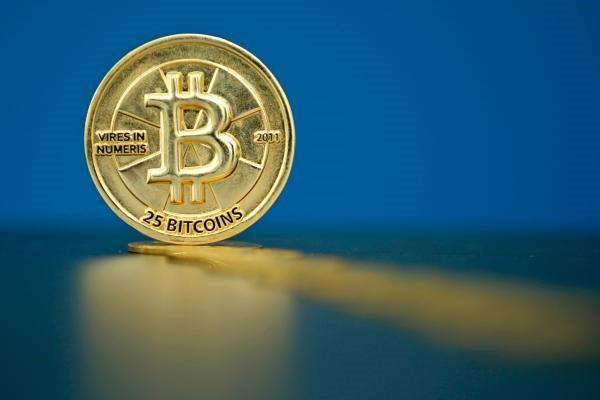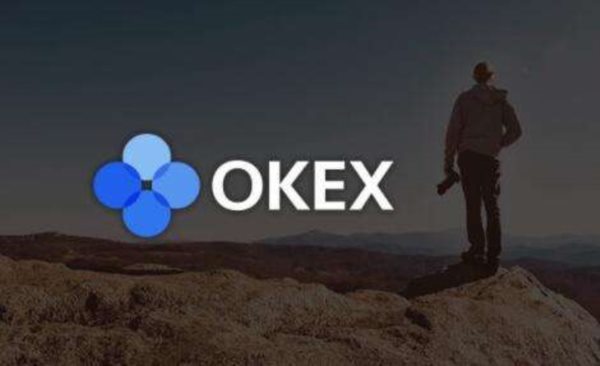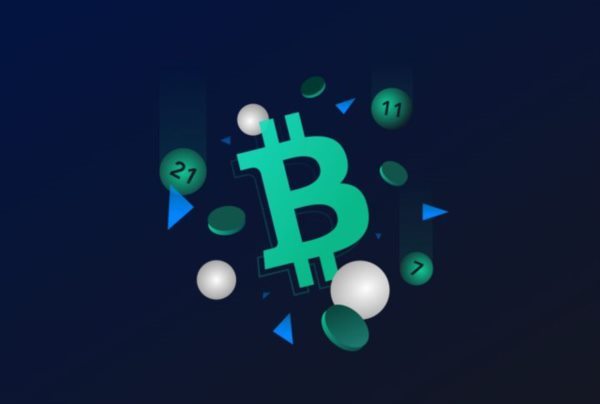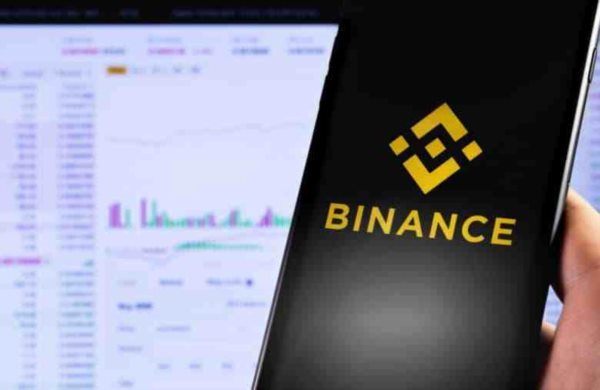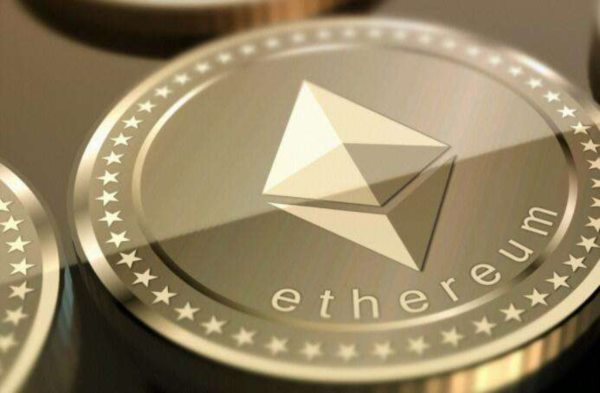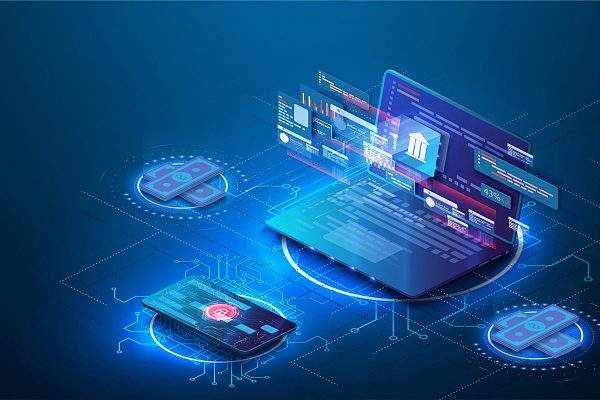时间:2024-03-19|浏览:314

作者:Kernel Ventures Jerry Luo
编辑:Kernel Ventures Rose、Kernel Ventures Mandy、Kernel Ventures Joshua
总而言之:
随着铭文的兴起,比特币网络现有的应用层已经无法支撑市场活动,是当前比特币生态发展的主要焦点。
比特币主流的Layer2解决方案有闪电网络、侧链、Rollup三种
闪电网络通过建立链下支付通道来实现点对点支付,通道关闭后在主网上进行结算。
侧链通过特定地址或者多重签名地址将BTC资产锁定在主网上,同时在侧链上铸造等值的BTC资产。 Merlin Chain能够支持全链多种类型的铭文资产,以Bitmap生态系统为后盾,其TVL已达到近40亿美元。
BTC Rollup基于Taproot电路,可以模拟链上智能合约,并在比特币主网络之外执行打包和计算操作。 B2 网络处于这一实施的最前沿,拥有超过 2 亿美元的链上 TVL。
专门为比特币构建的跨链桥并不常见。 还有更多与主流区块链集成的多链和全链桥接器,其中之一就是 Meson.Fi,它已经与多个比特币 Layer2 建立了关系。
比特币网络上的稳定币协议大多以超额抵押的形式实现,并支持其他 DeFi 协议,为用户带来更多收益。
比特币生态系统中有各种各样的 DeFi 项目,有从其他链迁移过来的,有当前发展热潮期间建立在原生比特币网络上的,还有上次牛市期间建立并部署为侧链的。 总体来说Alex提供了最丰富的交易产品和最流畅的交易体验,但Orders Exchange的成长上限较高。
比特币将成为本轮牛市周期的重要叙事。 有必要密切关注比特币生态系统各个垂直领域的顶级项目。
一、背景
With the overflow of inscription assets due to the Ordinals protocol, Bitcoin network, which was once characterized by lack of smart contracts, inefficent for developing, and in dearth of infrastructure and scaling capabilities, is experiencing a data boom on chain (refer to Kernel's previous research article: Can RGB Replicate The Ordinals Hype for more details). Similar to what happened when the Ethereum network first came into established, formatted text, images, even videos were being scrambled to 4MB Tapscript scripts that would have never been executed. While this surge in on-chain activities contributed to the growth and development of the Bitcoin ecosystem and infrastructure, it also created a surge in transaction volumes and a huge storage burden on the network. In addition, for a wide variety of inscriptions, simple transfers can no longer satisfy users' transaction needs, and users are looking forward to the introduction of a wide range of derivatives trading services in Bitcoin. Hence the development of the Bitcoin application layer has become relatively urgent right now.









Source: BitVM White Paper
Ideally, a BitVM prover would compile and compute the circuits off-chain and return the results to the Bitcoin network for execution. However, since the off-chain process is not automated by smart contract, to prevent the provers from committing fraud transactions, BitVm requires the provers on the network to conduct a challenge. Verifier first reproduce the output of a certain TapLeaf, then add it with other TapLeaf results provided by the provers as inputs to drive the circuit. If the output is false, the challenge is successful, which means that the prover has provided a fraud message, and vice versa. However, to accomplish this process, the Taproot circuit needs to be shared between the challenger and the prover in advance, and, only the interaction between a single prover and a single verifier can be realized.
2.3.2 SatoshiVM
SatoshiVM is an EVM compatible zkRollup Layer2 solution for Bitcoin. The implementation of smart contracts on SatoshiVM is the same as on BitVM, using Taproot circuits to simulate complex functions. SatoshiVM is divided into three layers, the Settlement Layer, the Sequencing Layer and the Proving Layer. The Settlement Layer, also known as the Bitcoin mainnet, is responsible for providing the DA layer, storing the Merkle Roots and Zero Knowledge Proofs of transactions, and settling transactions by verifying the correctness of the Layer2 packaged transactions through the Taproot circuit. The Sequencing Layer is responsible for packaging and processing transactions, and returning the results of the transactions to the mainnet along with the zero-knowledge certificates, and the Proving Layer is responsible for generating zero-knowledge certificates for the tasks received from the Sequencing Layer and passing them back to the Sequencing Layer.
Source: SatoshiVM Docs
2.3.3 BL2
BL2 is a zkRollup Bitcoin Layer2 based on the VM Common Protocol (the official preconfigured VM protocol that is compatible with all major VMs). similar to other zkRollup Layers, its Rollup Layer mainly packs transactions and generates the corresponding zero-knowledge certificates through zkEVM. BL2's DA layer introduces Celestia to store bulk transaction data and only uses the BL2 network to store the zero-knowledge proofs, and finally returns the zero-knowledge proofs validation and a small amount of validation data, including BVC, to the main network for settlement.
Source: BL2.io
BL2's official X account has been updated daily, and it has also announced its development plan and token program, which will allocate 20% of its tokens to OG Mining, as well as the launch of a testnet in the near future. At this stage, the project is relatively new compared to other Bitcoin Layer2 and in its early stage, with only 33,000 followers on X. It's worth paying attention to as it introduces some of the more recent concepts such as Celestia and Bitcoin Layer2. However, there are no actual technical details on the website, with only a demo of what to expect, and no whitepaper for the project. At the same time, the goals are quite big, such as the abstraction of accounts on Bitcoin and compatibility with the VM protocol of mainstream virtual machines. Whether the team will be able to achieve this goal is still questionable, so we will consider taking a more reserved approach.
Source: BL2's X Account
2.3.4 B2 Network
The B2 Network is a zkRollup Layer2 with Bitcoin as the settlement layer and DA layer, which is structured into a Rollup Layer and a DA Layer. User transactions are first submitted and processed in the Rollup Layer, which uses a zkEVM scheme to execute user transactions and output the associated proofs, followed by storage of user state in the zkRollup Layer. The batch transactions and generated zero-knowledge proofs are forwarded to the DA Layer for storage and validation. The DA Layer can be subdivided into three parts: the Decentralised Storage Node, the B2 Node, and Bitcoin mainnet. The decentralised storage node receives the Rollup data and periodically generates temporal and spatial zero-knowledge proofs based on the Rollup data and sends the generated zero-knowledge proofs to the B2 Node, which is responsible for off-chain validation of the data, and then records the transaction data and corresponding zero-knowledge proofs in TapScript on the Bitcoin mainnet after validation is completed. The B2 Node is responsible for confirming the authenticity of the ZKP and finalising the settlement.
Source: B2 Network White Paper
B2 Network has a good influence among major BTC Layer2 programs, with 300,000 followers on X, surpassing BEVM's 140,000 and SatoshiVM's 166,000, which is also a Zk Rollup Layer2. At the same time, the project has received seed round funding from OKX and HashKey, attracting a lot of attention, and the TVL on the chain has exceeded $600 million.
Source: bsquared.network
B2 Network has launched B2 Buzz,and in order to use B2 Network, you need an invitation link. B2 Network uses the same communication model as Blast, which provides a strong two-way benefit binding newcomers and those who have already joined the network giving them sufficient motivation to promote the project. After completing simple tasks such as following the official X account, you can enter the staking interface, which supports the use of assets on four chains: BTC, Ethereum, BSC and Polygon. In addition to Bitcoin, inscriptions, ORDI and SATS can also be staked on the Bitcoin network. If you stake BTC, you can transfer the assets directly, whereas if you stake an inscription, you need to inscribe and transfer, and it is important to note that since there are no smart contracts on the Bitcoin network, the assets are essentially multisig-locked to a specific BTC address. The assets staked on the B2 network will not be released until at least April this year, and the points gained from staking during this period can be exchanged for mining components used for virtual mining, of which the BASIC miners only requires 10 components to activate, while the ADVANCED miner requires more than 80 components.
Officials announced a partial token program, 5% of the total tokens will be used to reward virtual mining, and the other 5% will be allocated to ecological projects on B2 network for airdrop. At the time when much attentions are paid for Tokenomics fairness, 10% of the total amount of tokens is difficult to fully mobilize the enthusiasm of the community. It is expected that B2 network will have other staking incentives or LaunchPad plans in the future.
Among the three types of BTC Layer2, Lightning Network has the fastest transaction speed and lowest transaction cost, and has more applications in real-time payment and offline purchase. However, to realize the development of the application ecosystem on Bitcoin, it is difficult to build all kinds of DeFi or cross-chain protocols on Lightning network in terms of stability and security, and thus the competition in the application layer market is mainly between the sidechain and Rollup types. Sidechain solutions do not need to confirm transactions on the main network, and have more mature technical solutions and implementation difficulties, and thus have the highest TVL among the three. Due to the lack of smart contracts on the Bitcoin main network, the confirmation solution for Rollup data is still under development, and it might take a while for actual usage.
Source: Kernel Ventures
3.1 Multibit
Multibit is a cross-chain bridge designed specifically for BRC20 assets on the Bitcoin network, and currently supports the migration of BRC20 assets to Ethereum, BSC, Solana, and Polygon. In the process of cross-chain bridging, users first need to send their assets to a BRC20 address designated by Multibit, and wait for Multibit to confirm the transfer of the assets on the main network, then the users will have the right to cast the corresponding assets on other chains, and to complete the cross-chain bridging process, users need to pay gas to mint on the other chain. Among the cross-chain bridges, Multibit has the best interoperability and the largest number of BRC20 assets, including more than ten kinds of BRC20 assets such as ORDI. In addition, Multibit also actively expands the cross-chain bridging of assets other than BRC20, and currently supports the Farming and cross-chain bridging of governance tokens and stablecoins of Bitstable, the native stablecoin protocol of BTC. Multibit is at the forefront of cross-chain bridges for BTC-derived assets.
The Cross Chain Assets that Multibit supports, Source: Multibit's X Account
3.2 Sobit
Sobit is a cross-chain protocol between Solana and Bitcoin network. Cross-chain assets are mainly BRC20 tokens and Sobit's native tokens. Users collateralize BRC20 assets on the Bitcoin mainnet to a designated Sobit address, and wait for Sobit's validation network to verify that the user can then Mint the mapped assets at the designated address on the Solana network. At the heart of SoBit's validation network is a validator-based framework that requires multiple trusted validators to approve cross-chain transactions, providing additional security against unauthorized transfers. Sobit's native token is Sobb, which can be used to pay for cross-chain fees for the Sobit Cross-Chain Bridge, totaling 1 billion coins. Sobb distributes 74% of its assets in a Fair Launch. Unlike other DeFi and cross-chain tokens on Bitcoin that have gone a upward trend these days, Sobb's price has been on a downward cycle after a brief uptrend, dropping more than 90 percent, not picking up any significant momentum along with BTC's uptrend, which may be caused by Sobb's chosen vertical. Sobit and Multibit's market orientations are very similar. But at this stage, Sobit can only support cross-chain for Solana, with only three kinds of BRC20 assets that can be bridged cross-chain. Compared with Multibit, which also provides cross-chain bridging of BRC20 assets, Sobit is far behind in terms of its ecosystem and completeness of cross-chain assets, and thus can hardly gain any advantage in the competition with Multibit.
The Price of Sobb, Source: Coinmarketcap
3.3 Meson Fi
Meson Fi is a cross-chain bridge based on the principle of HTLC (Hash Time Locked Contract). It supports cross-chain interactions between 17 mainstream chains including BTC, ETH and SOL. In the cross-chain process, users sign the transaction under the chain, then submit it to Meson Contract for confirmation and lock the corresponding assets in the original chain. Meson Contract broadcasts the message to the target chain through Relayer after confirming the message. There are three types of Relayer: P2P node, centralized node and no node, P2P node has better security, centralized node has higher efficiency and availability, while no node requires user to hold certain assets on both chains, which user can choose depending on actual situation. LP on the target chain also calls the Lock method on the Meson Contract to lock the corresponding asset after checking the transaction through postSwap of the Meson Contract, and then exposes the address to Meson Fi. The next operation is the HTLC process, where the user specifies the address of the LP on the original chain and creates a hash lock, removing the asset by exposing the hash lock original image on the target chain. This is then followed by the HTLC process, where the user specifies the LP address and creates a hash lock in the original chain, exposing the hash lock image in the target chain to retrieve the asset, and then the LP retrieves the user-locked asset in the original chain through the original image.
Source: Kernel Ventures
Meson Fi is not a cross-chain bridge specifically designed for Bitcoin assets, but a full-chain bridge like LayerZero. However, major BTC Layer2 such as B2 Network, Merlin Chain, and BEVM have all established partnership with Meson Fi and recommend using it to cross-chain bridge their assets during the staking process. According to official reports, Meson Fi processed more than 200,000 transactions during the three-day Merlin Chain staking event, as well as about 2,000 cross-chain staking of BTC assets, including transactions across all major chains to Bitcoin. As Layer2 on Bitcoin continues to release and introduce staking incentives, Meson Fi’ is more likely to attract assets for cross-chain, and see an increase protocol revenue.
Overall, Meson Fi and the other two cross-chain bridges are two different kinds of cross-chain bridge. Meson Fi is essentially a full-chain cross-chain bridge, but happens to work with many of Bitcoin's Layer2s to help it bridge assets from other networks. Sobit and Multibit, on the other hand, are cross-chain bridges designed for Bitcoin's native assets, serving BRC20 assets as well as other DeFi and Stablecoin protocol assets on Bitcoin. Comparatively speaking, Multibit offers a wider variety of BRC20 assets, including dozens of assets such as ORDI and SATS, while Sobit only supports three BRC20 assets so far. In addition, Multibit has partnered with some of the Bitcoin stablecoin protocols to provide cross-chain services and stake revenue activities, providing a more comprehensive range of services. Finally, Multibit also offers better cross-chain liquidity, providing cross-chain services for five major chains, including Ethereum, Solana, and Polygon.
4.1 BitSmiley
BitSmiley is a series of protocols based on the Fintegra framework on the Bitcoin network, including the Stablecoin Protocol, the Lending Protocol, and the Derivatives Protocol. Users can mint bitUSD by over-collateralization of BTC in BitSmliey's stablecoin protocol, and when they want to withdraw their collateralized BTC, they need to send the bitUSD back to the Vault Wallet for destruction and pay a fee. When the value of the collateralization falls below a certain threshold, BItSmiley will enter into an automatic liquidation process for the collateralized assets, and the formula for calculating the liquidation price is as follows:
$$??????????? ????? = \frac{??????????????? ∗ ????????????????}{???????? ?? ?????????? }$$
The exact liquidation price is related to the real-time value of the user's collateral and the amount of bitUSD minted, where Liquidation Ratio is a fixed constant. During the liquidation process, in order to prevent price fluctuations from causing losses to the liquidated, a Liquidation Penalty is designed in BItSmily to compensate for this, and the longer the liquidation time, the greater the amount of this compensation. The liquidation of assets is done by Dutch Auction, in order to complete the liquidation of assets in the shortest possible time. At the same time, the surplus of the BitSmiley protocol will be stored in a designated account and auctioned at regular intervals, in the form of a British auction with BTC bidding, which can maximize the value of the surplus assets. The BitSmiley project will use 90% of the surplus assets to subsidize on-chain collateral, while the remaining 10% will be allocated to the BitSmiley team for daily maintenance costs. BitSmiley's lending agreement also introduces a number of innovations to the settlement mechanism for the Bitcoin network. Due to the 10-minute block rate of the main Bitcoin network, it is not possible to introduce a prediction machine to judge price fluctuations in real time like Ether, so BitSmiley introduces a mechanism to insure a third party against failure of the other party to deliver on time, whereby the user has the option to pay a certain amount of BTC to the third party in advance to insure the transaction (which both parties are required to pay for), and when one party fails to complete the transaction on time, the transaction will be insured by the third party. When one party fails to complete the transaction on time, the guarantor will compensate the other party for the loss.
Source: BitSmliey WhitePaper
BitSmiley offers a wide range of DeFi and stablecoin features, as well as a number of innovations in its settlement mechanism to better protect users and improve its compatibility with the Bitcoin network. BitSmiley is an excellent stablecoin and DeFi model in terms of both settlement and collateralization mechanisms, and with the Bitcoin ecosystem still in its infancy, BitSmiley should be able to capture a significant share of the stablecoin competition.
4.2 BitStable
BitStable is a Bitcoin stablecoin protocol based on over-collateralization, and currently supports collateralization of ORDI and MUBI assets from Bitcoin mainnet, as well as USDT from Ethereum. Depending on the volatility of the three assets, BitStable sets different overcollateralization ratios, with USDT at 0%, ORDI at 70%, and MUBI at 90%.
资料来源:Bitstable.finance
BitStable也在以太坊上部署了相应的智能合约,通过质押获得的DALL稳定币可以在以太坊上1:1兑换成USDT和USDC。 同时,BitStable采用了双通证机制,除了稳定币DALL之外,还采用了BSSB作为自己的治理通证,通过BSSB持有者可以参与社区的治理并分享网络的收益。 BSSB 总数为 2100 万个,分为两种方式分配。 第一种是通过在比特币网络上质押 DALL 代币来赚取相应的 BSSB 治理代币,项目通过质押奖励分配 50% 的 BSSB 代币。 第二种方式是去年11月底Bounce Finance上的两轮LaunchPad,其中30%和20%的BSSB通过质押拍卖和固定价格拍卖来分配。 然而,在质押拍卖期间发生了黑客攻击,导致超过 300 万个 BBSB 代币被销毁。
资料来源:coinmarketcap
黑客攻击期间,项目组及时响应。 剩下的25%未受到黑客攻击影响的代币仍然被发行,虽然成本较高,但这一措施较好地恢复了社区的信心,最终避免了价格冲突。
5. 比特币 DeFi
5.1 Bounce Finance
Bounce Finance 由一系列 DeFi 生态项目组成,包括 BounceBit、BounceBox 和 Bounce Auction。 值得注意的是,Bounce Finance最初并不是一个服务于BTC生态系统的项目,而是为以太坊和BSC设立的拍卖协议,去年5月它转变了方向,以利用比特币发展热潮。 BounceBit 是一个与 EVM 兼容的比特币 POS 侧链,并将根据谁从比特币主网质押比特币来选择验证者。 BounceBit还引入了混合收益机制,用户可以将BTC资产质押在BounceBit上,通过POS验证和相关的DeFi协议在链上赚取收益,也可以通过镜像链上资产和从CEX安全地转移资产和从CEX转移资产。在 CEX 上赚取收入。 BounceBox 类似于 Web2 中的应用商店,发布者可以自定义设计一个 dApp,即盒子,然后通过 BounceBox 进行分发,然后用户可以选择自己喜欢的盒子参与 DeFi 活动。 Bounce Auction 是 Ether 项目的主要部分,是对各种资产的拍卖,并提供多种拍卖选项,包括固定价格拍卖、英国拍卖和荷兰拍卖。
Bounce's native token, Auction, was released in 2021 and has been used as the designated staking token for earning points in several rounds of Token LaunchPad on Bounce Finance, which has fueled the recent rise in the price of Auction tokens. What's more noteworthy is that BounceBit, the new staking chain that Bounce has built after switching to Bitcoin, is now open for on-chain staking to get points and test network interaction points, and the project's X account clearly indicates that points can be exchanged for tokens and that token issuance will take place in May this year.
资料来源:Coinmarketcap
5.2 订单交换
Orders Exchange is a DeFi project built entirely on the Bitcoin network, currently supporting limit and market pending orders for dozens of BRC20 assets, with a blueprint to introduce swaps between BRC20 assets in the future. The underlying technology of Orders Exchange consists of Ordinals Protocol, PSBT and Nostr Protocol. More information on the Ordinals Protocol please refer to Kernel's previous research article, Kernel Ventures: Can RGB Replicate The Ordinals Hype. PSBT is a key feature on Bitcoin, where users sign a PSBT-type signature consisting of an Input and an Output via SIGHASH_SINGLE | ANYONECANPAY. PSBT is a bitcoin signature technology that allows users to sign a PSBT-X format consisting of an Input and an Output, with the Input containing the transaction that the user will execute and the Output containing the the prerequisite for user's transactions, which requires another user to execute the Output content and perform a SIGHASH_ALL signing on the network formula before the content of the Input finally takes effect. In Exchange's Pending Order transaction, the user completes the Pending Order by means of PSBT signature and waits for other party to complete the transaction.
Source: orders-exchange.gitbook.io
Nostr is an asset transfer protocol set up using NIP-100 that improves the interoperability of assets between different DEXs. All of Orders Exchange's 100 million tokens have been fully released. And although it emphasized in the whitepaper that ttokens are only experimental and do not have any value, the project's elaborate airdrop plan still shows a clear intention of token economy. There were 3 main directions for the initial token distribution, 45% of the tokens were distributed to traders on Orders Exchage, 40% of the tokens were airdropped to early users and promoters, and 10% were distributed to developers. However, the 40% drop was not described in detail on either the official website or the official tweets, and there was no discussion on X or in Discord's Orders community after the official announcement of the drop, so the actual distribution of the drop is still questionable. Overall, Orders Exchange's buy order page is intuitive and clear, and you can see the prices of all buy orders and sell orders explicitly, which is of high quality among the platforms offering BRC20 trading. The subsequent launch of the BRC20 token swap service on Orders Exchange should also help the value capture of protocols.
5.3 Alex
Alex is a DeFi Protocol built on top of the Bitcoin sidechain Stacks, currently supporting Swap, Lending, Borrow, and some other transaction types. At the same time, Alex has introduced some innovations to the traditional DeFi transaction model. The first is Swap, the traditional Swap pricing model can be divided into two types: x*y=k for ordinary pairs and x+y=k for stablecoins, but on Alex, you can set up the trading rules for pairs, and set it to be a linear combination of the results of the two calculations according to a certain ratio, x*y=k and x+y=k. Alex has also introduced OrderBook, a combined on-chain and off-chain order thinning model that allows users to quickly cancel pending transactions at zero cost Finally, Alex offers fixed-rate lending activities and has established a diversified collateral pool for lending services instead of the traditional single collateral, which consists of both risky and risk-free assets, reducing the risk of lending.
Source: Alexgo Docs
Unlike other DeFi projects in the BTC ecosystem, which entered the market after the Ordinals protocol had blown up the BTC ecosystem, Alex started working on the BTC DeFi ecosystem as early as the last bull market, and has raised a seed round of funding. Alex is also excellent in terms of performance and the different types of transactions, even many DeFi projects on Ethereum do not have much competitive edge over Alex's transaction experience. Alex's native token, Alex Lab, has a total supply of 1 billion, and 60% of it has already been released, which can still be earned by staking or by offering as a liquidity provider on Alex. However, revenue will hardly reach the level it was at during early launch. As one of the most well-established DeFi project on Bitcoin, Alex's market cap is considered not that high, with the Bitcoin ecosystem probably being an important engine in this bull market. In addition, the sidechain where Alex was deployed, Stacks, will execute an important Satoshi Nakamoto upgrade, of which Stacks will be greatly optimized in terms of both transaction speed and transaction cost, and its security will be backed by the Bitcoin mainnet, making it a true Layer 2. This upgrade will also greatly reduce Alex's operating costs and improve its transaction experience and security. The Stacks chain will also provide Alex with larger market and trading demand, bringing more revenue to the protocol.
The application of the Ordinals protocol has changed the inability of the Bitcoin network to implement complex logic and issue assets, and various types of asset protocols have been introduced on the Bitcoin network one after another, improving upon the idea of Ordinals. However, application layer is not prepared to provide services, and in the case of the surge of inscription assets, the functions that can be realized by Bitcoin applications appear to be anachronistic, and thus the development of applications on Bitcoin network has become a hotspot for all parties to seize. Layer 2 has the highest priority among all types of applications, because all other DeFi protocols, no matter developed they are, if they do not improve the transaction speed and reduce the transaction cost of the Bitcoin mainnet, it will be difficult to release the liquidity, and the chain will be flooded with new transactions for speculation purposes. After improving the speed and cost of transactions on the Bitcoin mainnet, the next step is to improve the experience and diversity of transactions. Various DeFi or stablecoin protocols provide traders with a wide range of financial derivatives. Finally, there are cross-chain protocols that allow assets on Bitcoin mainnet to flow to and from the other networks. Cross-chain protocols on Bitcoin are relatively mature, but not exclusively since the development of the Bitcoin mainnet, as many of the multi-chain bridges and mainstream cross-chain bridges were designed to provide cross-chain services to the Bitcoin network. For dApps like SocialFi and GameFi, due to the high gas and latency constraints of the main Bitcoin network, no excellent projects have appeared so far, but with the speed up and scaling of the Layer2 network, it is likely that they will emerge on Layer2 of the Bitcoin network. It is certain that the Bitcoin ecosystem will be at least one of the hot topics in this bull market. With plenty of enthusiasm and a huge market, although the various ecosystems on bitcoin are still in the early stages of development, we are likely to see the emergence of excellent projects from various verticals in the bull market this time.
Source: Kernel Ventures
Kernel Ventures is a research & dev community driven crypto VC fund with more than 70 early stage investments, focusing on infrastructure, middleware, dApps, especially ZK, Rollup, DEX, Modular Blockchain, and verticals that will onboard the next billion of users in crypto such as Account Abstraction, Data Availability, Scalability and etc. For the past seven years, we have committed ourselves to supporting the growth of core dev communities and University Blockchain Associations across the world.
BEVM White Paper:https://github.com/btclayer2/BEVM-white-paper
What is a Bitcoin Merkelized Abstract Syntax Tree:https://www.btcstudy.org/2021/09/07/what-is-a-bitcoin-merklized-abstract-syntax-tree-mast/#MAST-%E7%9A%84%E4%B8%80%E4%B8%AA%E4%BE%8B%E5%AD%90
BitVM White Paper:https://bitvm.org/bitvm.pdf
Bitcoin Scripting Principles:https://happypeter.github.io/binfo/bitcoin-scripts
SatoshiVM Official Website:https://www.satoshivm.io/
Multibit's Docs:https://docs.multibit.exchange/multibit/protocol/cross-chain-process
Alex White Paper:https://docs.alexgo.io/
Merlin Technical Docs:https://docs.merlinchain.io/merlin-docs/
Sobit WhitePaper:https://sobit.gitbook.io/sobit/

